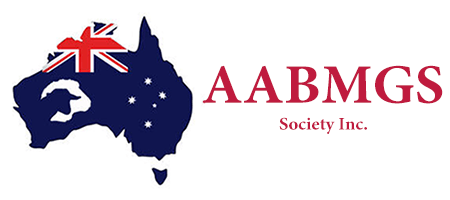Photo – Mount Darragh Miniatures Smithfield Sapper and Babylon Luna
The Miniature Anglo Nubian is in the early stages of development in Australia and is being bred as a mid-sized dairy goat with ancestry comprising the standard-sized Anglo Nubian in combination with the Australian Miniature Goat, Australian Bush Goat or Nigerian Dwarf.
The Miniature Anglo Nubian is being bred as a graceful and elegant animal which, when Purebred Status is reached, will ideally stand between 60 and 70 centimetres at the wither. They can come in any colour or colour pattern, with short, fine, glossy hair. They are bred to produce a relatively high quantity and quality of milk with the high butterfat yield of the standard Anglo Nubian. .
Emphasis is on a structurally correct animal with a well-attached udder that milks with ease – this breed being intended for small farms and property owners who milk by hand and prefer a smaller animal for handling, feeding, and accommodation purposes.
Breed Standard
General appearance (style and quality): The ideal is an alert, exotic animal with a high, proud head carriage, majestic bearing and upright stance. The goat should show the true attributes of sound dairy type.
Head (skull, eyes, ears, mouth, nostrils): Profile short and arched. Polled or neatly disbudded. Muzzle fine and tapered, nostrils flat, ideally the bite should be where the teeth fit snugly against the dental pad, but the teeth may extend beyond the dental pad. Ears low set on the head, long, broad and pendulous. Eyes should be almond shaped and set wide apart.
Neck: Strong, medium length and without tassels, dewlap may be present on both bucks and does.
Backline: Straight back either level or slightly rising to hips. May show slight dip behind withers but with no sign of weakness.
Forequarters: Withers well defined, blending firmly into shoulders. Chest broad and deep.
Body (barrel): Heavy framed with good length and reasonable depth.
Hindquarters: Rump rounded, broad and strong but not steep. Wide between thurls, tail short.
Legs: Legs strong and straight with no inclination to cow hocks or weak pasterns, which should be short, strong and upright. Forelegs slightly longer than the depth through the girth.
Feet: Proportionate in size to bone structure, neat, even, level bearing.
Udder: Showing a broad attachment and no pocket, softly textured with a good capacity. Slight division allowed.
Testicles: Well developed, evenly balanced, not divided, carrying two testes.
Teats: Two, of good size, not large and unsightly, pointing slightly forward, set well apart and distinct from the udder.
Rudimentary teats: Two, set wide apart slightly to the fore and side of the scrotum, of good size but not overdeveloped, unless the buck is milking.
Size (height at withers): Does 60–70cm (64cm ideal), Bucks 65–75 cm (70cm ideal)
Coat: Short, fine and glossy (bucks can have a longer and harsher coat than the does).
Colour: Any colour or combination of colours. May be plain (all one colour), broken coloured or mottled. Skin black, but may be grey with black pigmentation. Tan skin is acceptable in light coloured goats.
Differing from the ideal (found and recognised):
- Horned.
- Wry tail.
- Slightly overshot jaw (the teeth may extend beyond the dental pad in older goats giving the appearance of a slightly overshot jaw but it is the top of the teeth that are out of line, not the actual jaw).
Faults:
- Fine bone
- Short, stiff ears
- Straight to dished face
- Cow hocks, dropped pasterns
- Size differing substantially from the ideal
- Visible teeth
- Roach back or sway back
- Pink skin
- Poor feet
- Splayed feet
- Weak or narrow chest
- Lack of dairy quality
- Fleshy udder
- Pocket in udder
- Teats: small, thin, ill defined or unbalanced
- Lack of milking capacity
- Lack of masculinity in bucks
- Unduly pendulous, divided or uneven scrotum.
Disqualifications:
- Parrot mouth
- Double teats
- Double orifices
- Supernumerary teats
- Intersex
- Wry face
- Undescended testicles or one testicle only.
- Wattles/Toggles
Show Height Limits
- Under 6 months
Does: 54cm. Bucks: 55cm - 6 to 12 months
Does: 60cm. Bucks: 62cm - 12 to 24 months
Does: 66cm. Bucks: 68cm - 24 to 36 months
Does: 68cm. Bucks: 72cm - 3 to 4 years
Does: 69cm. Bucks: 74cm - Over 4 years
Does: 70cm. Bucks: 75cm.
Faults:
- Fine bone
- Roach back or sway back
- Weak or narrow chest
- Slab sided
- Cow hocks
- Dropped pasterns
- Poor feet
- Splayed feet
- Concave head
- Straight, Flat or upright horns
- Ears folded lengthways
- Stiff protruding ears
- Short ears
- Visible teeth
- Wry face
- Narrow muzzle
- Naturally polled
- Lacking muscle tone
- Lacking Width
- Sharp or steep withers
- Post legged
- Lack of masculinity in bucks
- Size differing substantially from the ideal
- Pink Skin
- More than 2 sets of teats
Disqualifying Show faults:
- More than 2 sets of teats
- Supernumerary teats
- Divided or uneven scrotum
- Undescended testicles or one testicle only
- Intersex
Show Heights Limites
- Under 6 months
Does: 50cm. Bucks: 55cm - 6 to 12 months
Does: 57cm. Bucks: 58cm - 12 to 24 months
Does: 61cm. Bucks: 63cm - 24 to 36 months
Does: 63cm. Bucks: 67cm - 3 to 4 years
Does: 64cm. Bucks: 69cm - Over 4 years
Does: 65cm. Bucks: 70cm.





